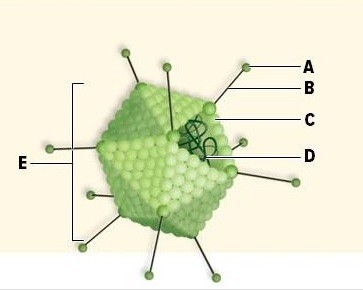Which of the following statements regarding the Chlamydia life cycle is incorrect?
A. Elementary bodies differentiate into reticulate bodies in the cell nucleus.
B. The elementary body is the infectious stage of Chlamydia.
C. Elementary bodies are released from the host cell to continue the infectious cycle.
D. Reticulate bodies multiple by binary fission.
Answer: A
You might also like to view...
Microorganisms use hydrogen bonds to attach themselves to the surfaces that they live upon. Many of them lose hold of the surface because of the weak nature of these bonds and end up dying or being washed away
Why don't microbes just use covalent bonds instead? A. Covalent bonds are always permanent bonds; the microbes could never get OFF their surface if they used them. B. Covalent bonds depend on completely giving up or completely accepting an electron to form the bond. This isn't possible for many microbes without dramatically altering their basic molecular composition. C. Covalent bonds typically require enzymes to form/break, whereas hydrogen bonds don't. If covalent bonds were used, it would require much more energy and molecules to be contributed from the cell. Hydrogen bonds don't have these requirements. D. Covalent bonds may have more specific and stringent requirements for what atoms can bond with. This makes for stronger bonds, but also decreases the overall potential for bonds that could readily be created between the microbe and its desired surface. E. C and D
Aquatic systems
What will be an ideal response?
All of the alleles for all the loci present in a population is called the:a
population variation. b. evolutionary potential. c. population compilation. d. gene pool. e. allele collection.
Name the labeled structures of the virus pictured in this figure.  A: ________B: ________C: ________D: ________E: ________
A: ________B: ________C: ________D: ________E: ________
What will be an ideal response?